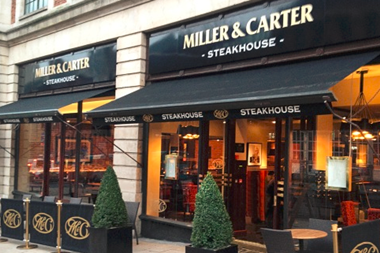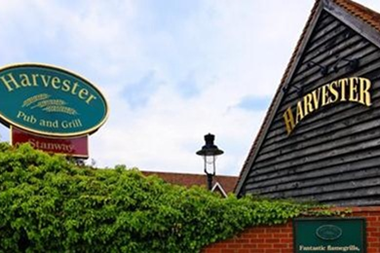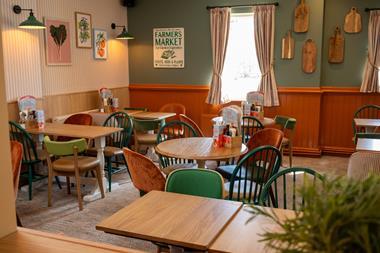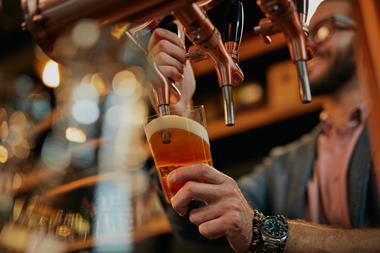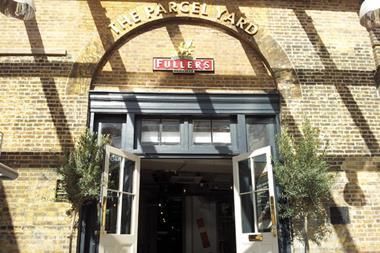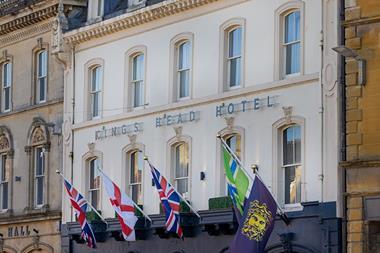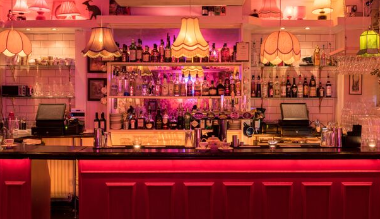MCA talks to Mitchells & Butlers (M&B) chief executive Phil Urban about the consumer landscape; the value equation; the return of the company’s innovation ethos; the optimum size of a concept’s estate and how new format Son of Steak might potentially become a solution for part of the company’s retail & leisure parks estate.
Consumer confidence
Urban said: “Although there are quite a few indicators that suggest consumer confidence is on the wane, thus far we probably haven’t see it in our businesses, but we are very aware that we have cost headwinds ahead that will also hit the consumer.
“We analyse our estate by 14 to 15 different geographic areas, but from that it is hard to give a pointer where one part of the country is doing better or worse than another. There are pockets, London and the South East has done well, but so has Wales and Scotland. The North East might be softer but some of this depends on the density of sites we have in that area. I can’t really point to a region that is out of kilter to the rest. We might be in danger of talking ourselves into a downturn at present.”
Value/price equation
Urban said that M&B’s range of offers would help it counter some of the impact of the aforementioned headwinds. He said: “We have a range of different offers, some of which overlap, but mostly talk to different audiences and different occasions, and ones you can, depending on where you are in the cycle, dial up or dial down accordingly. Also the price/value equation is not all about price. The example I use is where we have converted a number of our Harvesters to Miller & Carters this year. So effectively we have swapped a £8.50 spend per head brand for a £17 spend per head brand, but in many cases it’s the same customers using both and enjoying the Miller & Carter experience. It is not that the Harvester customer is not willing to pay £17, but paying £17 for a quality steak that they understand still represents great value. That is the logic we are putting into all our businesses; recognising that customers come to our sites for different reasons and different occasions and we need to make sure we have something to meet each of those occasions.
“We also have to recognise that bluntly putting up prices would be wrong. There are customers out there that for whom entry point pricing is critical and we will try and protect that where we can. But we do want to have the quality of offer that allows customers to say ‘Do you know what? I am going to come back here for a special occasion and spend a little bit more, because that’s what we want to do’. By thinking about each of our businesses like that, we are beginning to allow our customers to make that choice for themselves.”
Optimum concept size
Asked about what the potential for Miller & Carter is in terms of size (the group is on track to have 100 sites opened under the concept by the end of this year), Urban said: “I have always believed that the optimum size of around 130-150. I say that because the managers who operate in those sites like being part of a brand, like to know the figurehead of that brand and like to feel part of a team. Once you get to scale beyond that you start to feel like a number and for the person running those business, once you get past that number the chances of really getting to know your managers and staying on top of that is difficult. So to my mind that is the optimum size.”
This will include a decrease in the number of sites the group operates under its Harvester and Toby Carvery brands, which could fall to closer to 100 sites. The group’s Crown Carveries are being converted to its Stonehouse Pizza & Carvery format, which now has 72 sites.
Innovation ethos
Late last year and earlier this, M&B launched two new formats Son of Steak and Chicken Society. Urban said: “Son of Steak and Chicken Society are aimed at that Millennials market, which we are probably underrepresented in. We are still in the nurturing stage to get them to where we want them to be. It is too early to make a call on whether it is something we are going to roll out. But for me it was establishing that innovation ethos that was important, because that has bred new life into the core brands.
“The bigger prize for us would undoubtedly be, finding a solution to the assets we own. So Son of Steak, and Chicken Society to a lesser extent, but certainly Son of Steak might potentially become a solution for part of our retail/leisure parks. We also have a number of assets that we have identified that would lend themselves to Miller & Carter but already have a Miller & Carter nearby, so the bigger prize for us would be to find another string to our bow in that space. We may also look to use both concepts in under-utilised space in existing sites, but at present it is too early to make that call. This won’t move the dial in the short-term for M&B but it is important to keep at it.
“I also remind people that Miller & Carter has been around a number of years and it has taken time to get it refined to a model we are confident to roll. That work is ongoing for those two fledgling concepts and turning them into a brand that becomes meaningful.”
Being on the front foot with technology
Earlier this month, M&B became the latest operator to partner with FlyPay on its Flyt platform. Responding to customer demand, M&B will be including frictionless payments across its estate. Through the use of Flyt, M&B has access to Pay at Table and Bar Tabs technologies.
Urban said: “If there have been a change at M&B in terms of technology it has been getting us on the front foot of being early adopters and early trialists. So with Flypay we know that for a lot of customers the frustration is I get to the restaurant, get shown my table, get my menu and then have to wait for someone to take my order. A bigger frustration is then after having a nice meal having to wait to pay the bill. Flypay is proven for us and that will be our payment device. The next thing we want to trial is can we enable consumers to order themselves. With the technology we have in our kitchens it doesn’t matter if the waiter or waitress is punching the order into a tablet or the consumer does it themselves. In theory you will speed up that process and make the consumer feel they are totally in control of that journey. But it is early days on that, I couldn’t say whether I feel that will be successful or not, but I figure it is coming and we are going to keep on it and make it work for us. We are looking at whether you can do it on your own device through Flypay.”

























